I was going to limit myself to requests for the 2 French Fighters previously posted, but the highly detailed visuals I found for this aircraft were too tempting. That and IL2 really does need a French made bomber, and this was the most important one in my opinion.
Voila le Loire et Olivier 451 Bomber

The LeO 451 was conceived as a second-generation strategic bomber for the new French Air Force. In contrast to its predecessors which relied on machine guns for protection, the emphasis was placed on high-speed high-altitude cruise. The expectation was that high speed would force enemy fighters into tail-chase attacks and to that effect the aircraft was designed with a rear-firing cannon with an unobstructed rear arc of fire thanks to the twin rudders.


The Service Technique Aéronautique released the initial requirements on 17 November 1934, specifying a 5-seat bomber with a top speed of 400 km/h (215 knots, 250 mph) at 4,000 m (13,125 ft), and a combat radius of 700 km (435 mi) carrying a payload of 1,200 kg (2,650 lb). In September 1936, the requirements were revised to account for development of 1,000 hp (746 kW)-class engines, with cruise speed raised to 470 km/h (255 knots, 290 mph) and crew reduced to four. The Air Force's Plan II called for 984 of the resulting B4-class bombers. Numerous manufacturers submitted a proposal, including Latécoère, Amiot with its Amiot 351, and Lioré et Olivier, which was to be soon nationalized as part of the SNCASE.

The 1934 programme required modern solutions, and consequently the company management put a younger engineer called Pierre Mercier, who had expertise in cantilever airframes, at the helm of the design team.
Mercier's work resulted in a design, christened LeO 45, of a twin-engined aircraft of all-metal construction with a monocoque fuselage. Because of the speed requirements of the programme, a lot of effort was spent in reducing parasitic drag. Wings were equipped with slotted flaps and small bomb bays in the wing roots in addition to the main fuselage bomb bay, so as to limit the fuselage's cross-section. A specific wing structure was designed and patented by Mercier, where the inner part used two spars, with enough room between them for a 200 kg-class bomb and large self-sealing fuel tanks. However the spars didn't go all the way to the wing-tip, but made way for box-type structure.
Mercier also used his patented type of fairing for the LeO 45's radial engines. Unlike typical NACA cowlings, flow adjustment was not provided by flaps, but by a frontal ring that moved back and forth to respectively reduce or increase flow, without change in drag. Like many other French twin-engine planes of the era, propellers rotated in the opposite directions to eliminate the undesirable effects of propeller torque. Undercarriage was fully retractable, with an unusually complicated mechanism for the main wheels in order to reduce the size of the engine nacelles.
The fuselage hosted the four-man crew in the following order: the bombardier, who was also the commander as per French tradition, sat in the glazed nose ahead of the pilot. Immediately behind the pilot, the radio operator could man a defensive 7.5 mm M.1934 (500 rounds) machine gun from an underbelly retractable "gondola". A corridor alongside the main bomb bay led to the rear gunner position, that featured a powered mounting for the required 20 mm cannon. This was a really powerful one, the Hispano-Suiza HS.404, with 120 rounds, and excellent ballistic proprierties (over 800 m/s), well over MG FF and other Oerlikon guns. The turret was retractable when not needed. The armament was completed with another 7.5 mm machine-gun M.1934/39, this time fixed in the nose (300 rds). Overall, the Leo's armament was: 120 20 mm rounds, 800 7.5 mm rounds, up to seven 200 kg bombs, or other combinations (up to 1-2 500 kg bombs in the belly, plus the two 200 kg in the wings). The maximum load penalized the fuel, that was reduced to only 1,000 litres. The fuel tanks were: two 880 litres (inner wings), two 330 and two 410 litres (all in the external wings).

The LeO 45-01 prototype, powered by a pair of Hispano-Suiza 14Aa 6/7 radial engines producing 1,120 hp (835 kW) each flew for the first time on 16 January 1937. Despite problems with longitudinal instability, and engine reliability and overheating, the aircraft demonstrated excellent performance, reaching 480 km/h (260 knots, 300 mph) at 4000 m, and attaining 624 km/h (337 knots, 388 mph) in a shallow dive. In July 1938, the prototype fitted with the new Mercier cowlings reached 500 km/h (270 knots, 311 mph). Subsequently, the troublesome Hispano-Suiza engines were replaced with Gnome-Rhone 14N 20/21 producing 1,030 hp (768 kW) each, and the aircraft was redesignated LeO 451-01.
The first production LeO 451 was built in 1938. The decision to abandon Hispano-Suiza engines and a shortage of propellers resulted in production delays. The latter also caused most aircraft to be fitted with slower Ratier propellers which reduced the top speed from 500 to 480 km/h. As the result, although 749 LeO 451 had been ordered, only 22 were delivered by the start of World War II. Of these, only 10 were formally accepted by the Air Force. They were issued to a frontline unit tasked with experimenting the new type in the field, and flew a few reconnaissance flights over Germany, which resulted in the type's first combat loss.
At the start of the Battle of France on 10 May 1940, only 54 of the 222 LeO 451 that had been delivered were considered ready for combat, the remainder being used for training, spares, undergoing modifications and repairs or having been lost. The first combat sortie of the campaign was flown by 10 aircraft from GB I/12 and GB II/12 on 11 May. Flying at low altitude, the bombers suffered from heavy ground fire with one aircraft shot down and 8 heavily damaged. Within the next 8 days many of them were shot down. By the Armistice of 25 June 1940, LeO 451 of the Groupement 6 had flown approximately 400 combat missions, dropping 320 tons of bombs at the expense of 31 aircraft shot down by enemy fire, 40 written off due to damage, and 5 lost in accidents. There are other numbers, about 47 bombers lost (26 to the fighters, 21 to flak guns). Leo's were faster than many of the 1940s fighters, and faster than almost all the other models of bombers. Unfortunately for them, Luftwaffe had a first line totally equipped with fighters even faster (Bf-109 and 110), so the speed was not enough. The cruise speed was one of the strength in the Leo's performance, up to 420 km/h (7 km/min), this would made them difficult to catch. The diving speed and the climbing speed were very good as well (SM.79, as example, took 17 minuts to reach 5,000 m, compared to 14 of Leo's), even if not that useful for a bomber. Against Italy they operated without much difficulty. Tourin (Fiat plants) was near the frontier and thus fast to reach, if needed, and Italy had not radar, and even radios were not common in fighters. But Flak and Luftwaffe were a really dangerous foe. Leo's were optimized for medium-altitude operations (5,000 m), but they were forced to go far lower to find tactical targets. Seldom they had an even basic fighter escort (H-75, D.520). They were not unarmed, and German fighter had to respect their dorsal turret: on 6 June 1940, a single Leo (gunner Stg. Grandchamp, GBU.II/11) shot down two Bf-110C with the Hispano gun.
Big f*#&in' cannon!


German fighters had to learn how to avoid this danger, so they more and more attacked from below. Therefore, Leo's were forced to deploy both they retractable turret, and this slowed them appreciably (not known how much). Another problem was the German first strike. The 6th Groupement had 50 Leo's, but they were not dispersed and even lacked of A.A. defence on their airfields. Luftwaffe attacked them, and destroyed 40 bombers. 6th Groupement continued the fight, since Leo's were produced with a fast pace (around 4-5/day, there were over 200 built within 45 days). Losses remained high, in a single mission 13 Leo's were intercepted and four shot down by LW fighters. 6th Groupement totalled around 70 losses both in air and ground, but still continued to fight until the end. In the meanwhile, Leo's attacked Italy as well: Livorno, Novi Ligure, Vado, and even Palermo in a 4-ships morning mission.
A total of 452 aircraft had then been built, 373 accepted into service (including 13 for the Aéronautique navale), and around 130 lost in action in Europe.
Following the Armistice, LeO 451s continued to fly, now under the Vichy government. The aircraft were fitted with larger rudders and, later, two additional 7.5 mm machine guns in the rear turret. These extra weapons were added because of the limited capacity of the cannon magazines, and the fact that changing them in flight was extremely difficult. Aircraft production had totally stopped with the German occupation, but a 1941 agreement authorized Vichy authorities to have a limited number of military aircraft built. As a result, 109 additional LeOs were manufactured in 1942. The most notable of these was LeO 451-359 which was fitted with an experimental degaussing coil for remotely detonating naval mines (some British Vickers Wellingtons and German Junkers Ju 52s also carried a similar device).
Two bomber units equipped with LeO 451s, GB I/12 and GB I/31 were based in Syria when Allied forces invaded on 8 June 1941, at the start of the Syria-Lebanon Campaign. These were supplemented by GB I/25, which was dispatched from Tunisia. During this campaign, the LeO 451s flew a total of 855 sorties, losing 29 LeO 451s in the process.
After Operation Torch which began on 8 November 1942, surviving French LeO 451 in North Africa were used primarily for freight duties, although they flew a few bombing missions against Axis forces during the Tunisia Campaign. They were ultimately replaced in active service by Handley-Page Halifax and B-26 Marauder bombers.

The Germans were not especially interested in this airplane, but on 21 May 1943, Luftwaffe requested Regia Aeronautica to hand over 39 Lioré et Olivier LeO 451, captured by Italians troops in SNCASE factory in Ambérieu-en-Bugey (Lyon). The Luftwaffe - that claimed to have previously bought the Lioré - gave in exchange a stock of 30 Dewoitine D.520. Subsequently, the 451s were converted into trasport aircraft for fuel and troops. Other Lioré were delivered to the Regia Aeronautica and 12 were put in service with a ground attack unit, although they saw almost no active service.

Following the war, the 67 surviving aircraft were mostly used as trainers and transports. The LeO 451 was finally retired in September 1957, making it the last pre-war French design to leave active duty.
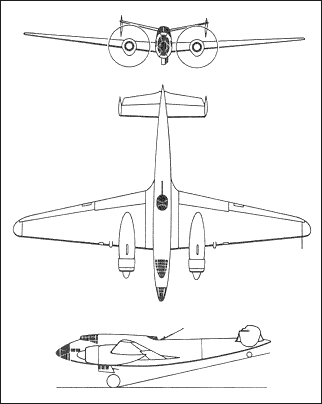
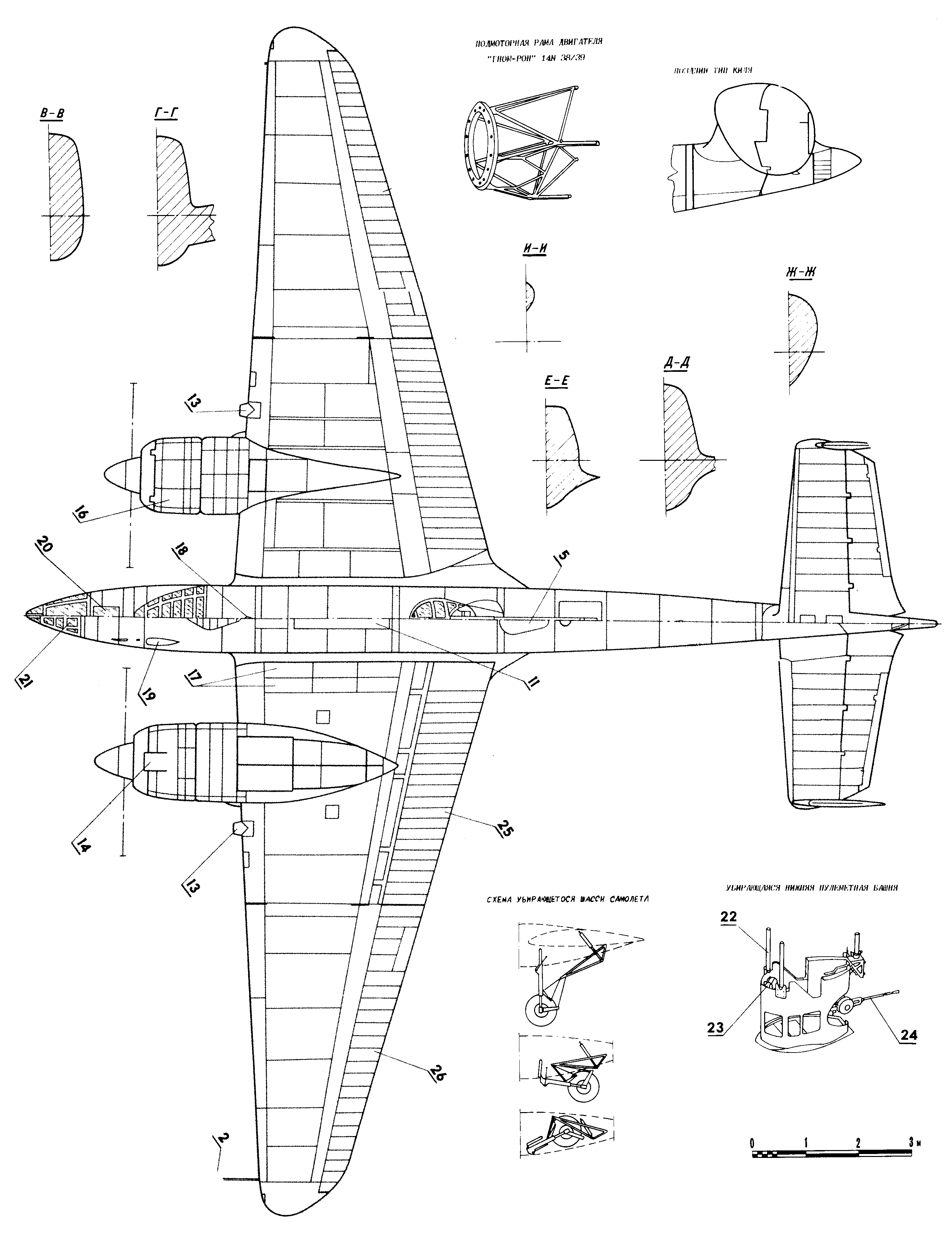

General characteristics
Crew: 4
Length: 17.17 m (56 ft 4 in)
Wingspan: 22.52 m (73 ft 11 in)
Height: 5.24 m (17 ft 2 in)
Wing area: 66 m² (710 ft²)
Empty weight: 7,530 kg (16,600 lb)
Max takeoff weight: 11,398 kg (25,130 lb)
Powerplant: 2× Gnome-Rhône 14N 48/49 or 38/39 14-cylinder air-cooled two-row radial engine, 790 kW (1,060 hp) each
Fuel capacity: 3,235 l (855 US gal)
The Office and Bombardier Station
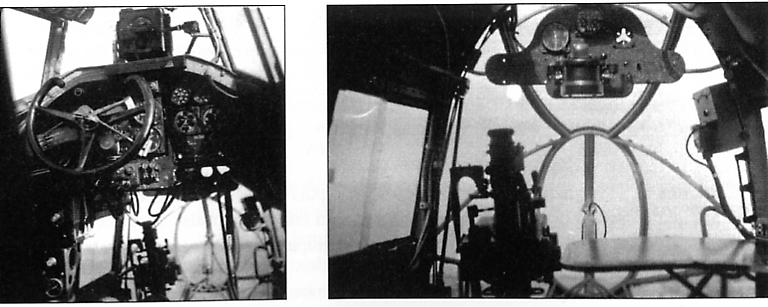
Instruments
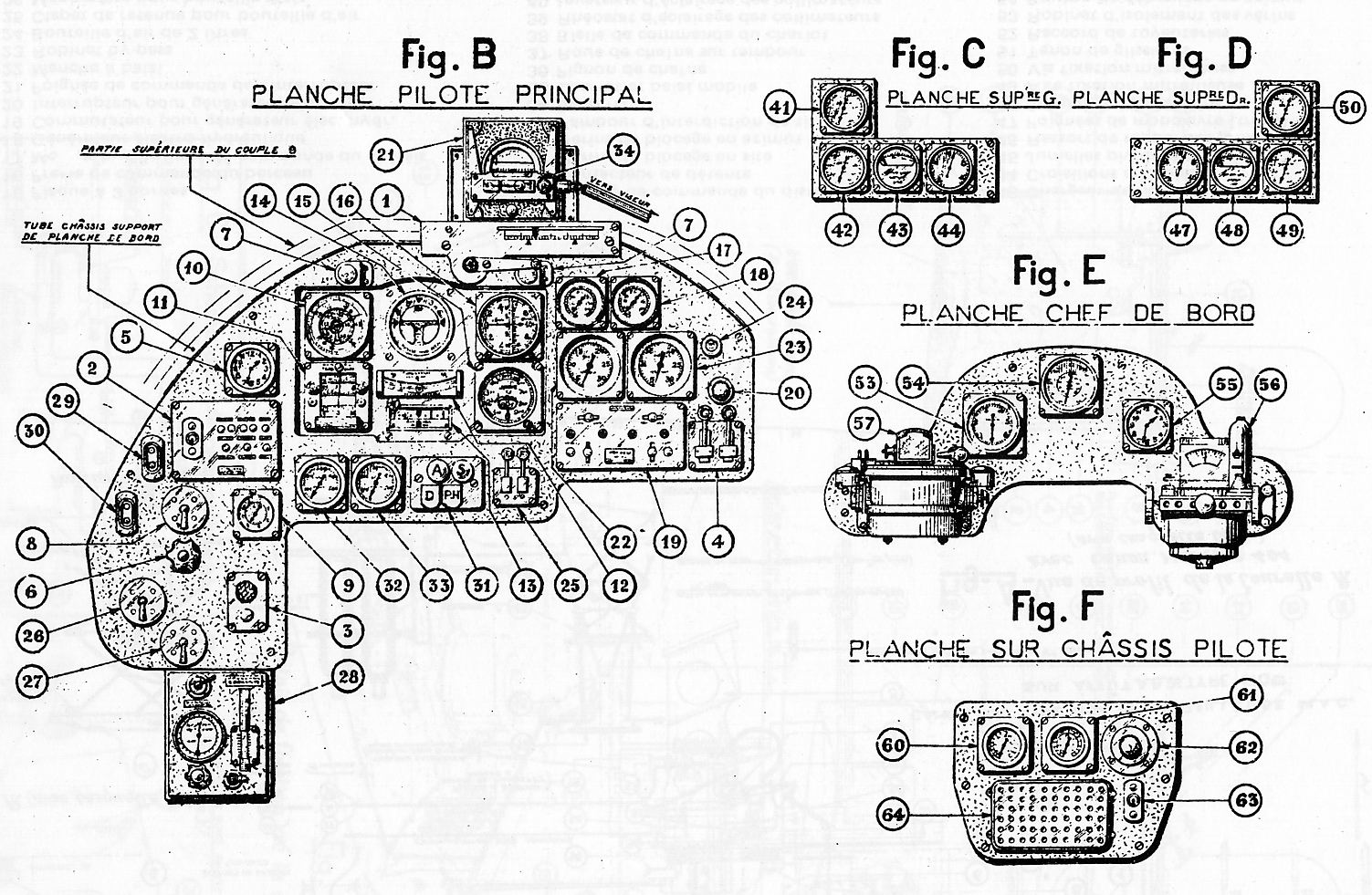
The Office -post war aircraft
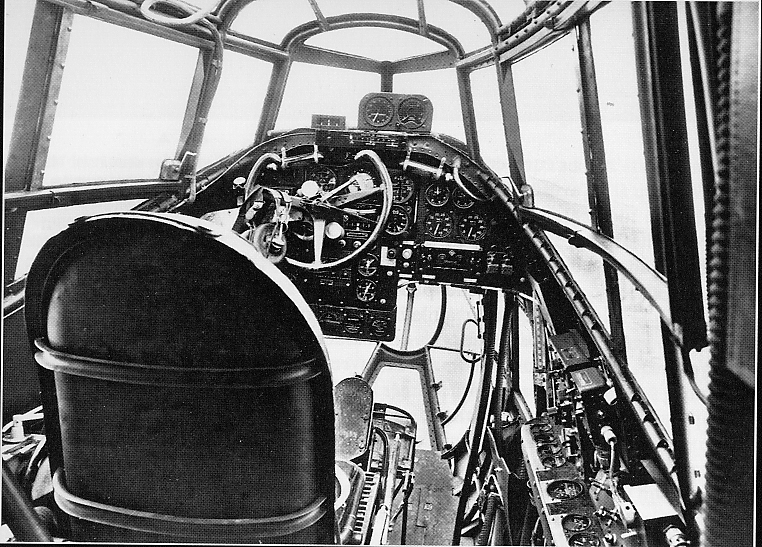
Performance
Maximum speed: 495 km/h, up to 502 km/h on trials (260 knots, 300 mph) at 4,000 m (13,125 ft)
Cruise speed: 420 km/h (225 knots, 260 mph)
Range: 2900 km (1,565 nm, 1,800 mi)
Service ceiling: 9,000 m (29,530 ft)
Armament
Guns:
1x 20 mm Hispano-Suiza HS.404 cannon in dorsal turret, 120 rounds
1x 7.5 mm (0.295 in) MAC 1934 fixed forward-firing machine gun, 300 rounds
1x 7.5 mm MAC 1934 in "dustbin" retractable ventral turret, 500 rounds
Bombs: Up to 1568 kg (3,457 lb) of bombs in fuselage and wing root bomb bays
7x 200 kg bombs (actual bomb weight: 224 kg or 494 lb)
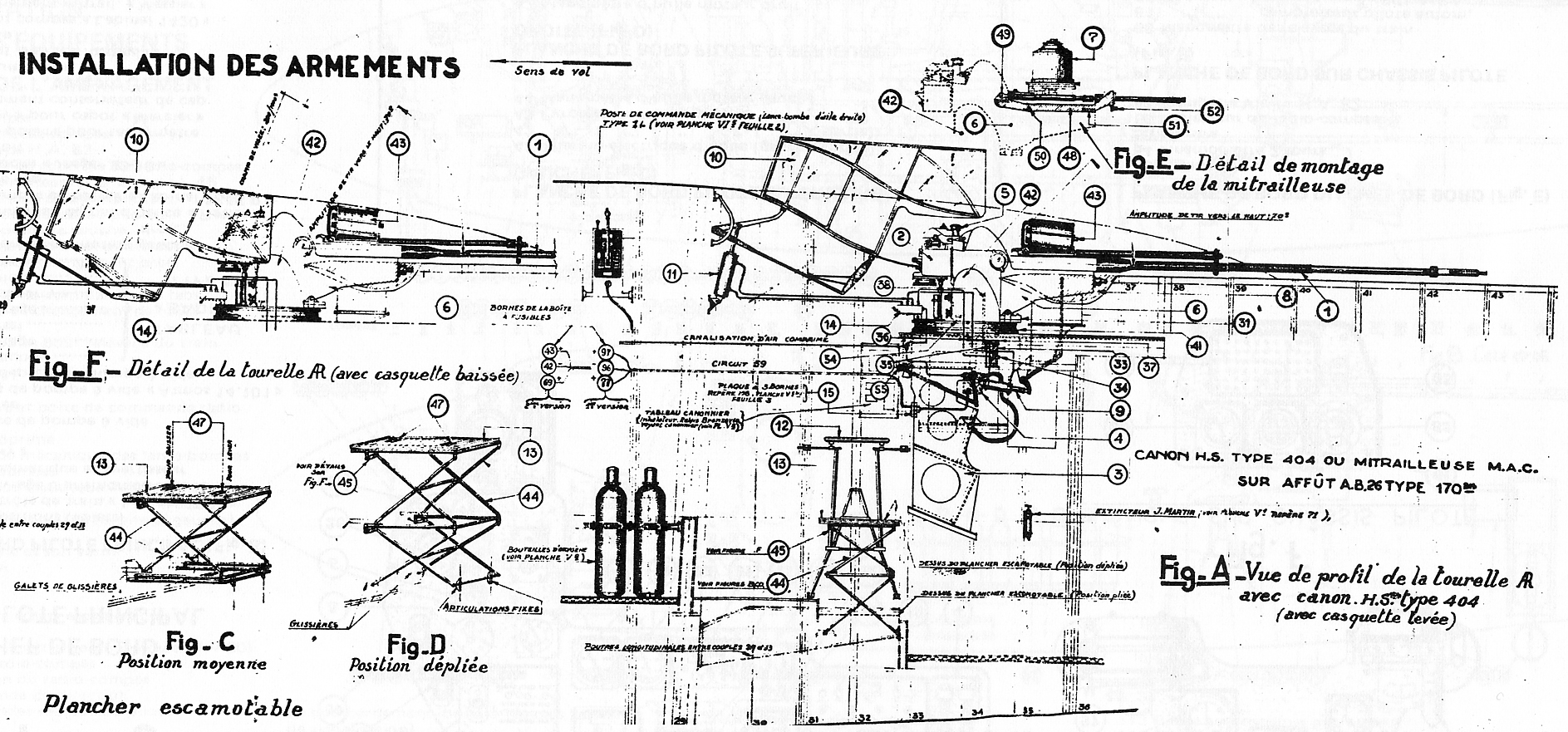
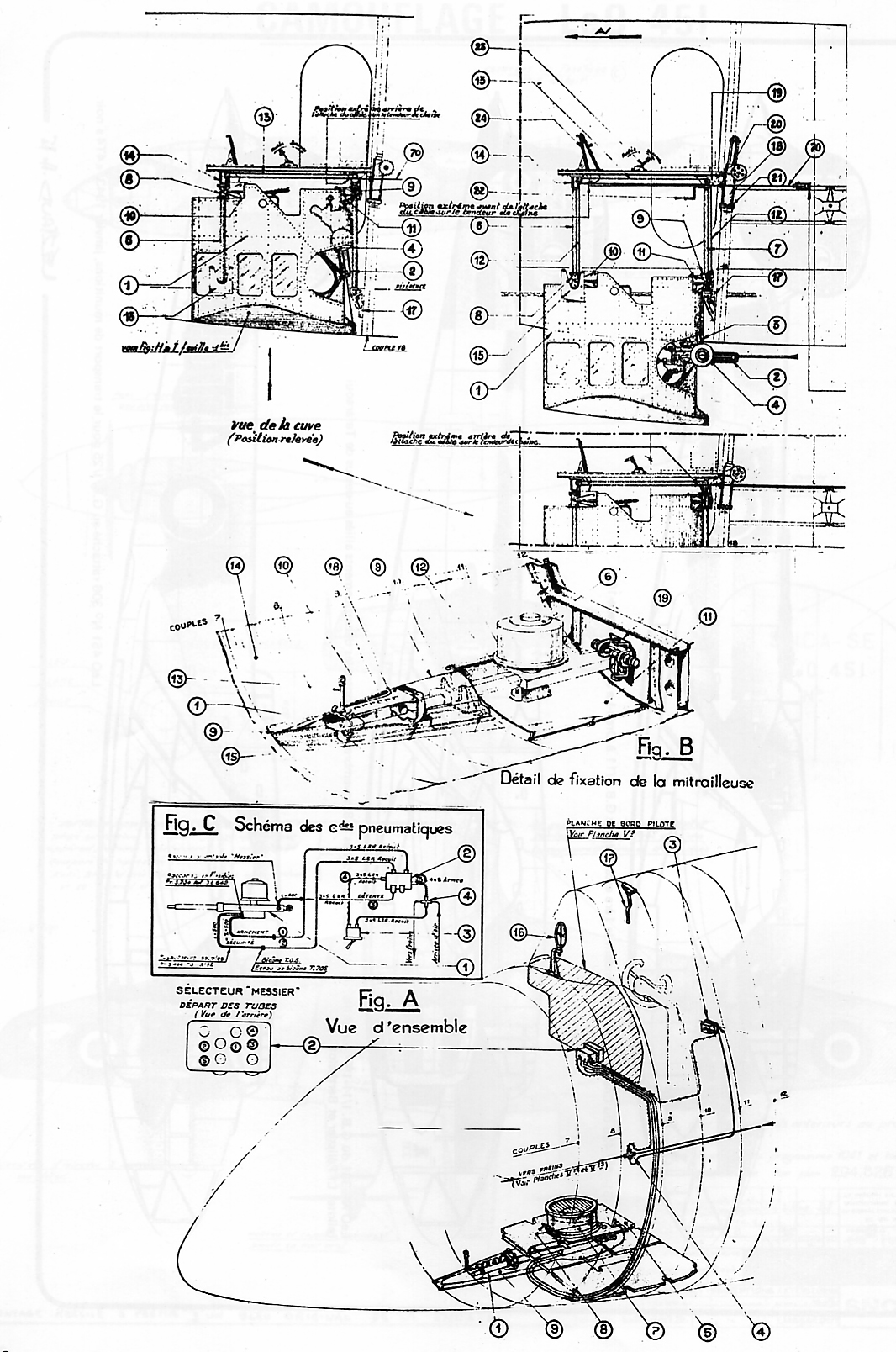
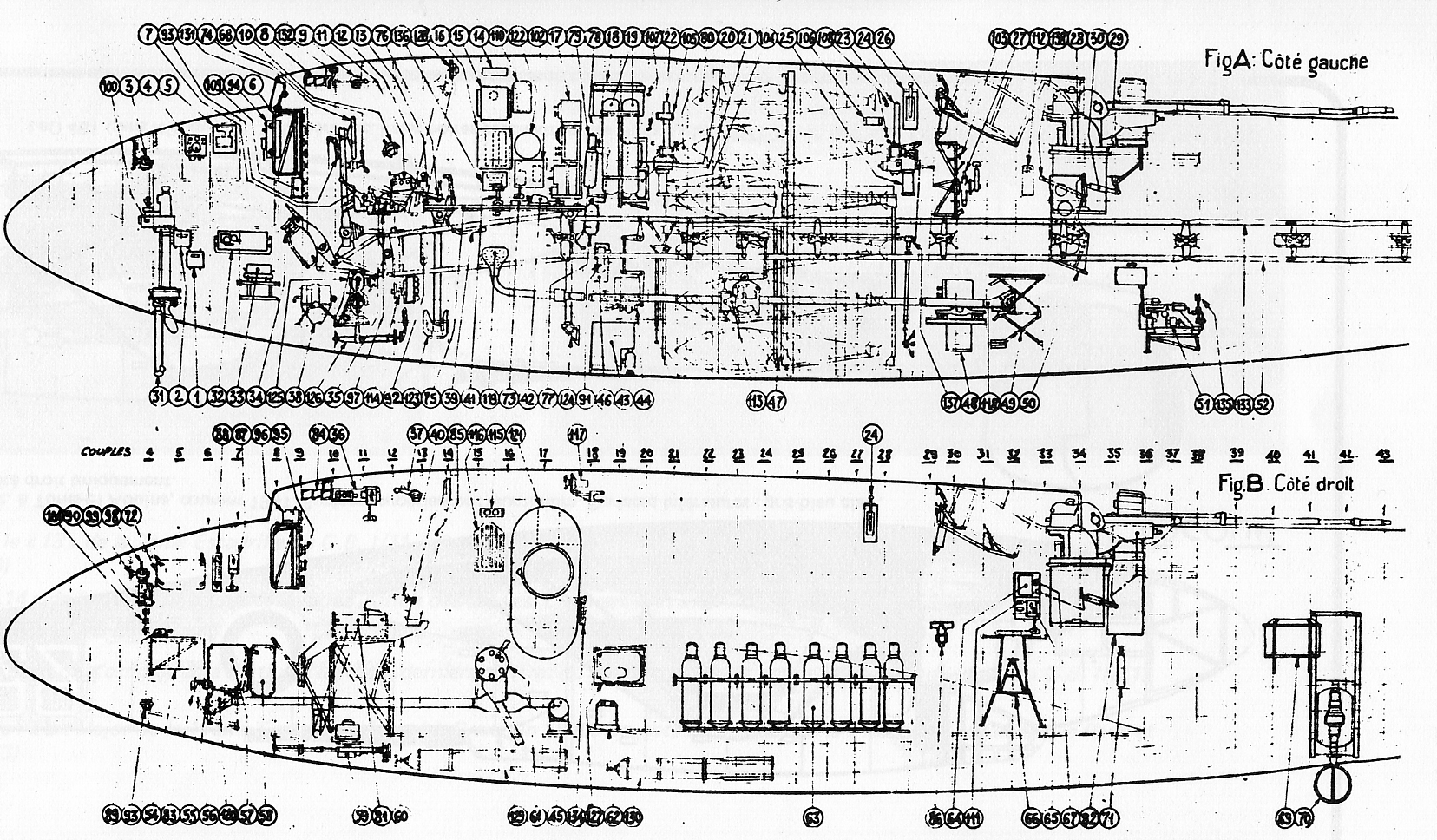


Belly Turret
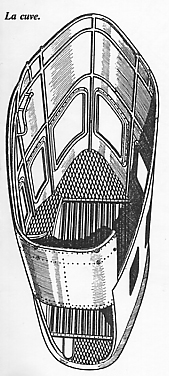


Vraiment un avion important!
Kopfdorfer
 Author
Topic: LeO 451 France's Missing Indigenous Bomber (Read 49512 times)
Author
Topic: LeO 451 France's Missing Indigenous Bomber (Read 49512 times)


